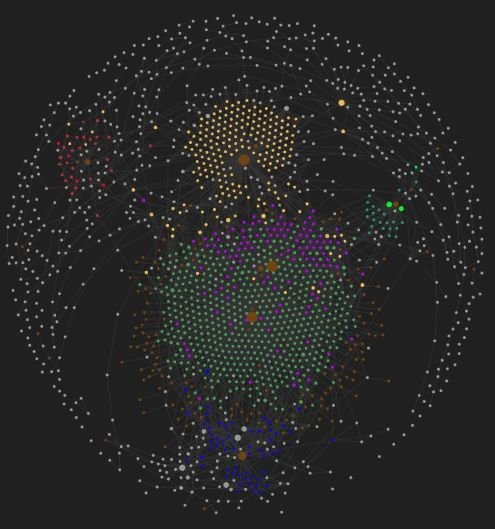I have transferred a total of 1,745 thoughts from TheBrain to Obsidian. Although this represents about 1/2 of 1 percent of the total thoughts I have on TheBrain, I find that in the transfer process, I will either delete more than a few ideas in the 30,000 or not move. Many are mountain peaks that I will never climb or are unclimbable (for me, anyway). When using TheBrain, I created a thought for each peak within a quadrant without giving it much thought. Now I list them as part of the quadrangle; however, I won't make a separate page until I climb the peak or hike the trail. Only creating a page in Obsidian should significantly reduce the number of orphan thoughts from the Geography section of my database.
Seventeen hundred thoughts have been a good testing phase to develop a feel for Obsidian. In the last two updates, I have made decisions based on how the Obsidian Graph view displayed the data. I still feel this was a good decision and led to how I currently handle geographical data.
I'm playing around with indexes and MOC (map of context) this week. Anyone that has reviewed Obsidian as a possible solution to their data needs has probably reviewed video files by Nick Milo. Nick has created a unique position in the Obsidian world with his "Link Your Thinking" program. While I'm comfortable with my knowledge base from TheBrain, one idea that seems to be popular among the "LYT" group is a map of context, or MOCs for short.
A MOC is designed to behave like an index, and I have yet to find real value in the process. However, as my database grows and gets beyond the essential journal, family, geography, blog, etc., I am beginning to see the potential for the index. For example, I had TheBrain set up with a home page entitled "My Life 6.4," which I update each year to reflect my current age. Because TheBrain was principally a mind mapping software, the home page links to significant areas of my life, including family, work, finance, and so forth. I'm developing a similar format within Obsidian.
“Hiking-Climbing, Reference Material MOC” screen capture. copyright BrickBarnBlog2022
My indexes are not perfected yet; I started with my hiking-climbing reference and quickly got bogged down by transferring over some of the books and troubleshooting my journal layouts by year. However, I think I have a good handle on the process which should speed things up as I go along.
One final thought is I discovered the Obsidian Graph View has a "tab" view section which is very interesting. For example, green is journaling entries (I have just two years transferred to Obsidian), and Orange includes books, both fiction and non-fiction. Dark blue dots are mountain peaks, red represents the limited test I have done with my Zetelkasten notes, and purple indicates a blog I have written.
I'm looking forward to what new things I learn next week.
Written September 28, 2022


